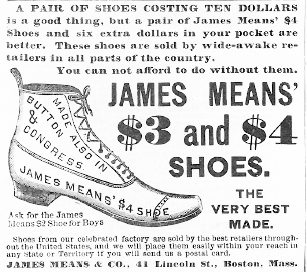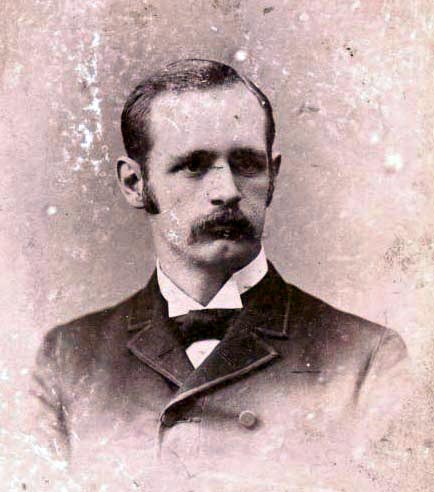
Gold from Seawater!

In 1898, the Reverend Prescott F. Jernegan founded the Electrolytic Marine Salts Company to extract gold from seawater. When the gold ran out, so did Rev. Jernegan, taking the company’s capital.
July 16, 2013

alias: RUFE PINE
BANK SNEAK
"Arizona Daily Star," January 19, 1932, via Newspapers.comEvery now and then, I find in the old newspapers some case that was little-noticed even at the time and soon forgotten, but which is so hauntingly weird, I feel it deserves a second look. The following death mystery is one of those stories.60-year-old Nora Smithson was one of those people who seem fated to aimlessly drift through
More...
Strange Company - 1/20/2025
Included in yesterday’s trip to Fall River was a stop at Miss Lizzie’s Coffee shop and a visit to the cellar to see the scene of the tragic demise of the second Mrs. Lawdwick Borden and two of the three little children in 1848. I have been writing about this sad tale since 2010 and had made a previous trip to the cellar some years ago but was unable to get to the spot where the incident occured to get a clear photograph. The tale of Eliza Borden is a very sad, but not uncommon story of post partum depression with a heartrending end. You feel this as you stand in the dark space behind the chimney where Eliza ended her life with a straight razor after dropping 6 month old Holder and his 3 year old sister Eliza Ann into the cellar cistern. Over the years I have found other similar cases, often involving wells and cisterns, and drownings of children followed by suicides of the mothers. These photos show the chimney, cistern pipe, back wall, dirt and brick floor, original floorboards forming the cellar ceiling and what appears to be an original door. To be in the place where this happened is a sobering experience. My thanks to Joe Pereira for allowing us to see and record the place where this sad occurrence unfolded in 1848. R.I.P. Holder, Eliza and Eliza Ann Borden. Visit our Articles section above for more on this story. The coffee shop has won its suit to retain its name and has plans to expand into the shop next door and extend its menu in the near future.
More...
Lizzie Borden: Warps and Wefts - 2/12/2024
There’s a lot of white in this depiction of a blustery winter day in the New York City of 1911: white snow on the street, stoops, and light poles; white-gray skies filling with factory smoke (or smoke from ship smokestacks?) across a grayish river. Then there’s the violent white brushstrokes of howling wind against the […]
More...
Ephemeral New York - 1/20/2025
An article I recently wrote for the British online magazine, New Politic, is now available online. The article, “The Criminal Origins of the United States of America,†is about British convict transportation to America, which took place between the years 1718 and 1775, and is the subject of my book, Bound with an Iron Chain: […]
More...
Early American Crime - 12/17/2021
Michael Gorman's Last Look at Sing Sing Prison.On October 9, 1888, convicted murderer Michael Gorman walked out
of Sing Sing Prison a free man after serving 33 years of a life sentence. Gorman,
who entered the prison as a young man, was 60 years old when he was pardoned by
New York Governor David Hill. During his incarceration, Gorman lost both
parents, two brothers died in the Civil War, and his
More...
Murder By Gaslight - 1/18/2025
A Busted HoneymoonSoapy Smith is arrested in Leadville, ColoradoCarbonate ChronicleMay 17, 1886Courtesy of Colorado Historic Newspapers
(Click image to enlarge)
ew information regarding Soapy Smith in Leadville, Colorado.
A friend, Don Hendershot, found the above newspaper article. Following is the text of that article.Carbonate ChronicleLeadville, ColoradoMay 17, 1886A Busted
More...
Soapy Smith's Soap Box - 1/12/2025
Youth With Executioner by Nuremberg native Albrecht Dürer … although it’s dated to 1493, which was during a period of several years when Dürer worked abroad. November 13 [1617]. Burnt alive here a miller of Manberna, who however was lately … Continue reading
More...









 The Reverend Prescott F. Jernegan.
The Reverend Prescott F. Jernegan. Charles Fisher.
Charles Fisher.



